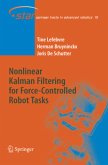
27,95 €
Sofort per Download lieferbar
eBook, PDF
25. März 2024
Burleigh Dodds Science Publishing

Broschiertes Buch
Softcover reprint of hardcover 1st edition 2005
12. Februar 2010
Springer / Springer Berlin Heidelberg / Springer, Berlin
978-3-642-06629-0
Ähnlichkeitssuche: Fact®Finder von OMIKRON
